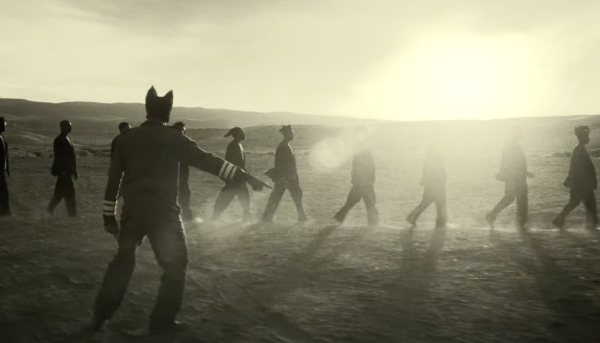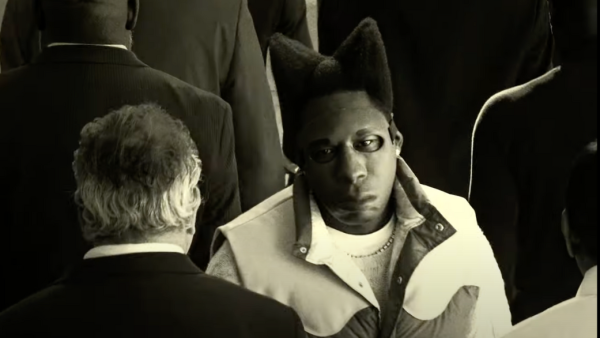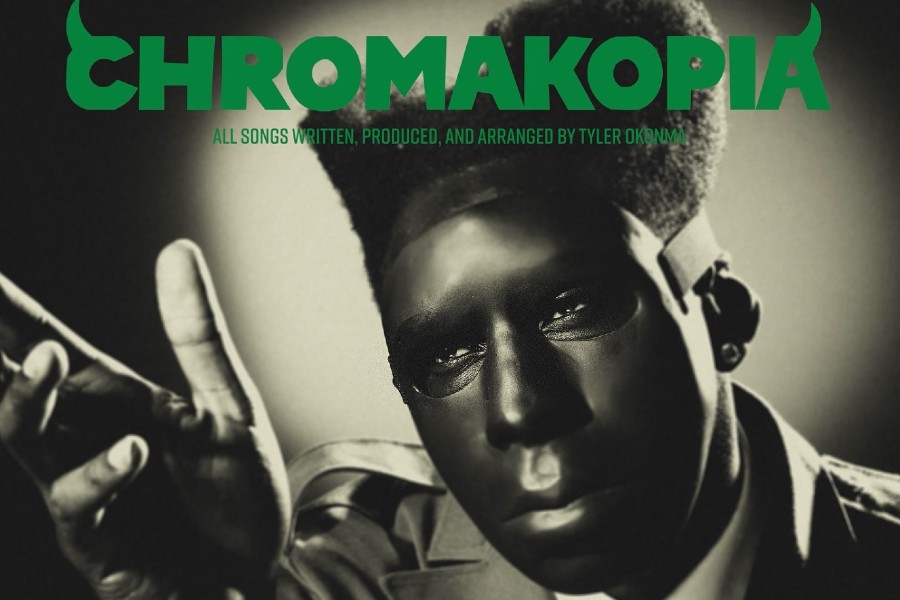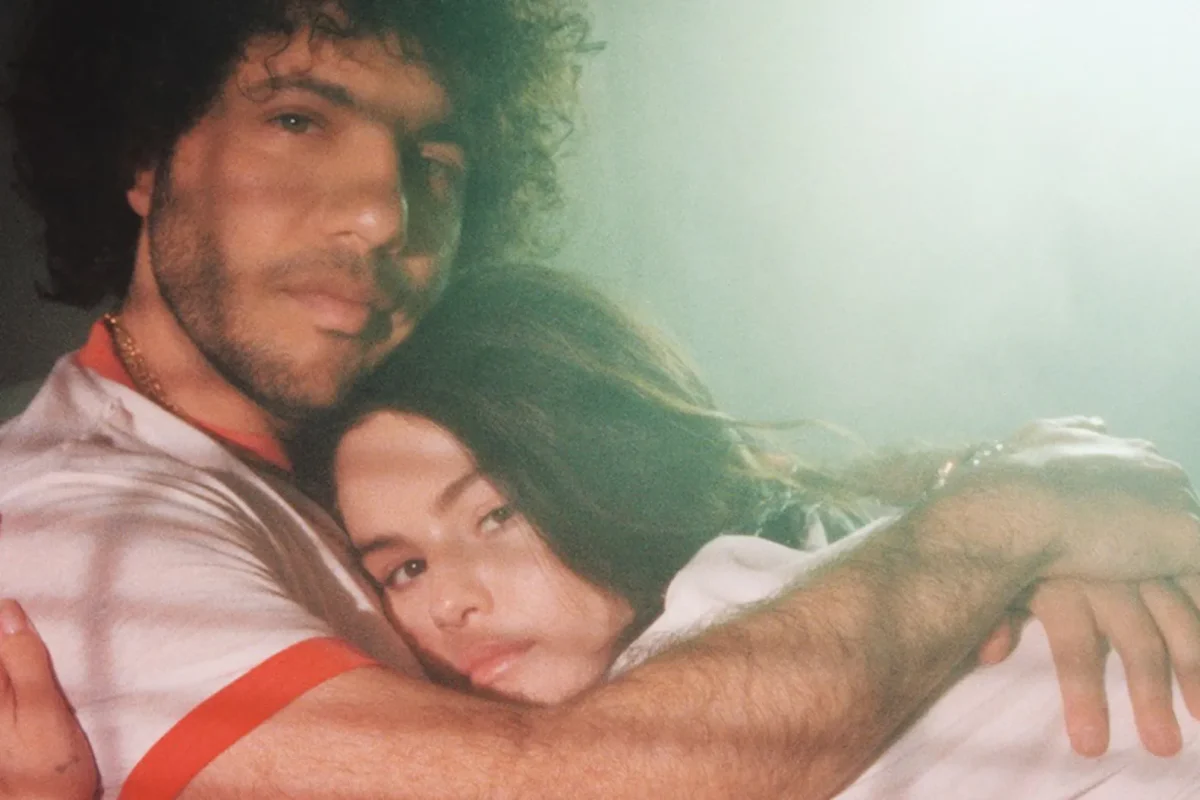As one of the most culturally impactful and stylistically eclectic artists in the hip-hop sphere, when rapper and record producer Tyler, The Creator drops any new music, everyone stops to listen. And after much anticipation, Tyler returned from a nearly three year long hiatus by releasing his newest album Chromakopia on Oct. 28.
Chromakopia follows the success of Tyler’s 2021 LP Call Me If You Get Lost and prior to that, his 2019 studio album Igor. With both of these albums having skyrocketing songs on the Billboard Hot 100 charts, it is no surprise that Chromakopia debuted with two songs, “St. Chroma” and “Noid”, in the top 10, and the album reached number one on the Billboard Hot 200 charts for two consecutive weeks. This is a result of the LP showcasing a different side of Tyler’s vulnerability, which shines throughout the album, lyrically, conceptually, and mechanically.
Tyler has always showcased his creativity through his music, and this album is no exception. With influences of jazz, soul, and hip-hop, Chromakopia is evocative of previous releases Cherry Bomb (2015), Flower Boy (2017), and Igor (2019). Even still, it manages to distinguish itself from the rest of Tyler’s discography.

Similar to his previous projects, Tyler introduced a new alter ego to fans through the album’s masked protagonist, St. Chroma. This character has been speculated to derive from Chroma the Great, a character from Norton Juster’s 1961 novel, The Phantom Tollbooth. In the book, Chroma is a music conductor who is responsible for directing a “color orchestra” that controls the sunrise and sunset. In Juster’s novel, Chroma is depicted as a nurturing figure for the protagonist, Milo, and provides him with many life lessons. In Tyler’s depiction however, St. Chroma is seen as an erratic and violent militant character, as seen in the music videos for “Noid” and “St. Chroma“. Even with this difference in the portrayal, this character allows Tyler to talk about a variety of important topics with his fans, such as death, abortion, maturity, fatherhood, and success, similar to how Juster uses Chroma the Great to explain complex topics.

Tyler begins the album with a hopeful track in the form of “St. Chroma”, a testament to the main character of the record. This intro track is an inspirational and intense build-up to the rest of the album, setting listeners up for the dystopian atmosphere of the record. From the dramatic stomping placed throughout the track, to the building melody, to the addition of some words of inspiration from his mother – a continuous voice throughout the album – this is a brilliant song to open with. “St. Chroma” fully captures the feel of the rest of the record. Additionally, in the music video for this track, Tyler appears to press a button exploding a shipping container. With the explosion, the green color grading of the video turns into fully realized color, which can be seen as a nod to Chroma the Great.

Two tracks after “St. Chroma” comes the song, “Noid”, a single that Tyler released a week before the rest of the album came out. This track, through the lyrics, staccato notes, and an almost disconnected production style, showcases Tyler’s struggle with the parasocial relationship he has developed with fans. The reverberated electric guitar instrumentals adds an almost horror movie feel to the song. This is a part of his fame that Tyler has rarely spoken out about, creating a new level of vulnerability that listeners have yet to see from Tyler. Additionally, the track samples another song, “Nizaka Panga Ngozi” by Ngozi family, sung in an African language, the Nyanja language, which was a very creative and interesting addition to the song.
Another level of vulnerability Tyler added to the album is through the voice of his mother, which guides the listener through Chromakopia, often with heart-wrenching or stirring speeches. In the 12th track of the album, “Like Him”, Tyler questions whether he will end up like his father. In a voice note from his mother, it is suggested that his past is complicated, which is a revelation in Tyler’s lore, as he has mentioned his distaste for his absent father in many previous works. This, along with the pregnancy scare he sings about in the 5th track “Hey Jane” showcases why he has been so worried about fatherhood. From these songs, it is clear that Tyler is scared about becoming the person that he detested for so long: his father.
The entire first half, and the majority of the second half, of the record is enjoyable and excellently written and produced. Some other notable tracks from the album are “Darling, I”, “Tomorrow”, “I Killed You”, and “Judge Judy”.
One part of the album that confused me was the ordering of the final three tracks. Sandwiched between “Like Him” and “I Hope You Find Your Way Home”, two emotional and hard hitting songs, is a sonically and lyrically different song from the second to last track: “Balloon”. If “Balloon” was placed before the other two tracks, I think the album would have been left on a more hard-hitting end.
As one of Tyler’s most introspective records to date, this is one of my favorite works that he has released. With the personal moments woven in throughout the album, along with the thematic elements and production, the whole album is an almost intimate conversation between Tyler and his listeners. Though the second half of the album is a bit disjointed, I think that the rest of the songs flowed together very cohesively, and truly cements Tyler as a culturally impactful artist in the hip-hop space. Additionally, the clear influences from his previous works makes this album even more enjoyable for a fan of Tyler.
I would recommend this album to any fan of Tyler’s previous works, as well as listeners of Childish Gambino, BROCKHAMPTON, and Kendrick Lamar.
9/10








